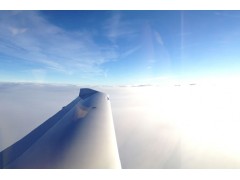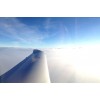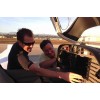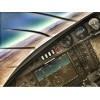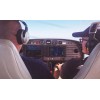Looking to add an Instrument Rating:
As the name implies, an instrument rating allows you to fly "by instruments” or in the clouds as some may say. Flying without visual reference to the ground, the horizon, or other landmarks you’ll have the freedom to fly just about anytime, anywher, without havin to wait on the weather. Clouds, fog, and other obstructions to visibility can linger for days at a time, so it would be difficult to travel long distances without encountering weather requiring instrument pilot skills.
Although this is one of the most challenging ratings to obtain, the instrument rating will greatly expand the utility of an airplane.
With an instrument rating, a small airplane becomes much more of a utility vehicle. While the light piston single airplanes are not ever going to be able to blast through weather like an airliner, they can handle conditions which would make visual flight impossible.
If you are considering a career in aviation, the instrument rating is just about mandatory as most commercial aviation depends upon being able to fly under all but the worst weather conditions.
Instrument Rating Requirements
Prerequisite: 50 hours cross country pilot in command
Note: Some of these hours can be obtained in the process of completing the rating.
Total Instrument Time: 40 hours (minimum)
Minimum Dual (with an instrument instructor): 15 hours
Other time can be with a safety pilot (private pilot or higher rating)
Instrument Approach Types
Finding an airport in the clouds requires careful navigation procedures. There are four common instrument approach types:
GPS (RNAV): These approaches use the precision of Global Positioning System navigation to guide the pilot to the final approach course. Most newer airplanes are equipped with GPS units.
ILS / Localizer: The ILS, or "precision approach" is the most common approach in use today. A subset of the ILS is the localizer approach, which provides the pilot with precise horizontal guidance, but does not include the vertical guidance of the glide slope.
VOR: These approaches involve flying a specific VOR radial to the airport. While less precise than GPS, these approaches are still widely used.
ADF: These approaches use non-directional beacons and careful attention to heading to locate the airport. While little used today, the ADF approach skill may prove useful in certain areas.
Frequently Asked Questions - Instrument Rating
Q. Will I get to fly in actual instrument conditions during training?
A. We try to get all students into some actual instrument conditions. Obviously, the instrument conditions must be above landing minimums to insure the flight can be safely concluded.

